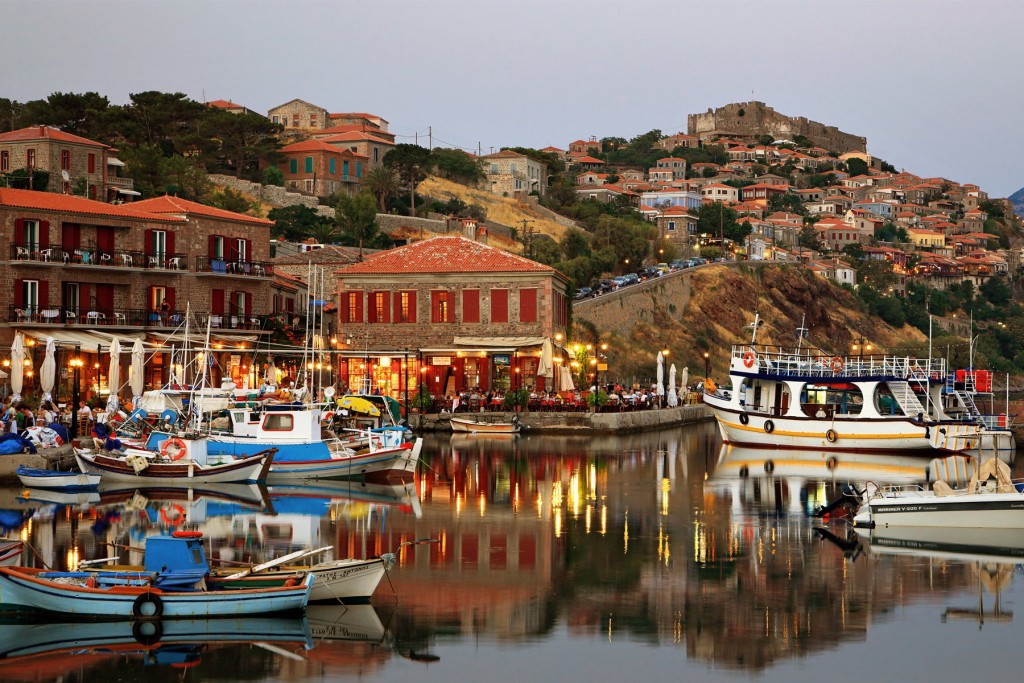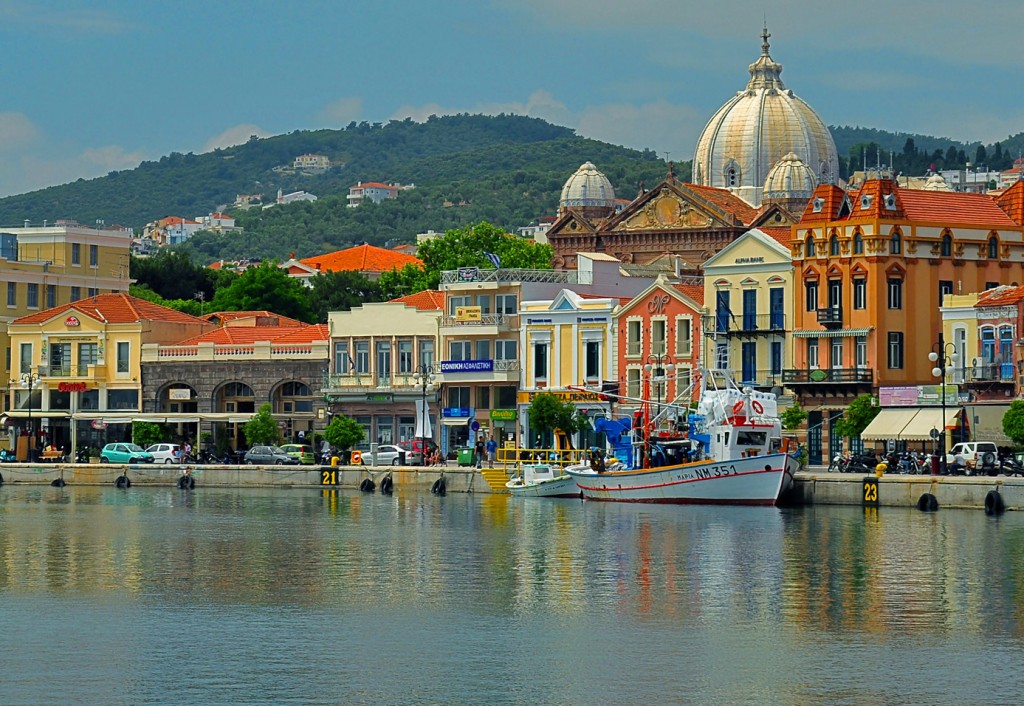
Lesvos in Greece
Beautiful Lesvos in Greece with many streams, rich flora and fauna, famous olives groves, the mild Mediterranean climate, charming traditional villages and remarkable examples of industrial architecture (olive presses, soap factories, tanneries) dating from the Island’s industrial development in the 19th century, impress all visitors.
Lesvos, is also known for the unique fossilized forest covering the Sigri-Eressos-Antissa area. It has been designated as a preserved natural monument since 1985. It is a forest ecosystem that has been fossilized 15-20 million years ago due to the intense volcanic activity in the area which included coniferous forests and mainly huge sequoias and primitive pine trees. It is one of the rarest natural monuments in the world (the only similar ecosystems today are the coniferous forests in north America), visited by thousands of tourists. The removal and transfer of fossilized material is prohibited by law. The forest includes six visitor parks in the area.
It is the third biggest island in Greece.
It is the third biggest island in Greece, after Crete and Evia, with an area of 1,630sq. km and a coastline of 370km. It has 90,000 residents. A few miles away from the SW coast of Turkey, it is located almost at the entrance of Adramytios Gulf, N of Chios. It belongs to the Lesvos Prefecture that includes Limnos and Ag. Efstratios. It is famous for two products,Ouzo and Olive Oil.
In prehistoric times, it was called Lassia due to its luxurient forest vegetation. It was also called Imerti (delicious), Pelasgia, Eolida and Makaria. The name Lesvos was from the mythical hero Lesvos who came here with Lapithes from Thessaly and married Mythimna, daughter of the settler Makaras. During prehistoric times it was a significant cultural centre of the NE Aegean Sea, and it flourished economically, commercially and culturally during Archaic times (7th – 6th century BC).
It is the homeland of the famous ancient poets Sappho and Alkaios. During the 1821 Greek War of Independence, many of the island’s residents were fighters and members of Filiki Etairia. Lesvos was liberated in 1912 under the Treaty of Lausanne. Many refugees from the Asia Minor coast settled on the island after the Asia Minor Disaster (1922), and the population exchange agreement

Mytilini
The contribution of Lesvos to the arts and letters has been invaluable. Eminent personalities such as Arion, Terpandos, Theophrastos, Pittakos Mitilineos, Theophilos, Il. Venezis, Str. Myrivilis, Arg. Eftaliotis (Kleanthis Michailidis), G. Iakovidis and the plastic artist Str. Elefteriadis were born here. Additionally, the Nobel prizewinning poet Odysseas Elytis was of Lesvian descent.
Mytilini is the Capital of Lesvos and of the Prefecture (with approximately 30,000 residents), and is one of the most ancient Greek cities, the administrative centre and the seat of Lesvos Prefecture, the Aegean Marine Ministry, the North Aegean Region and the Aegean University. It extends over seven hills and the traditional houses coexist harmonically with neoclassic mansions, Byzantine temples, refugee neighbourhoods and ancient monuments.
 En
En Gr
Gr

